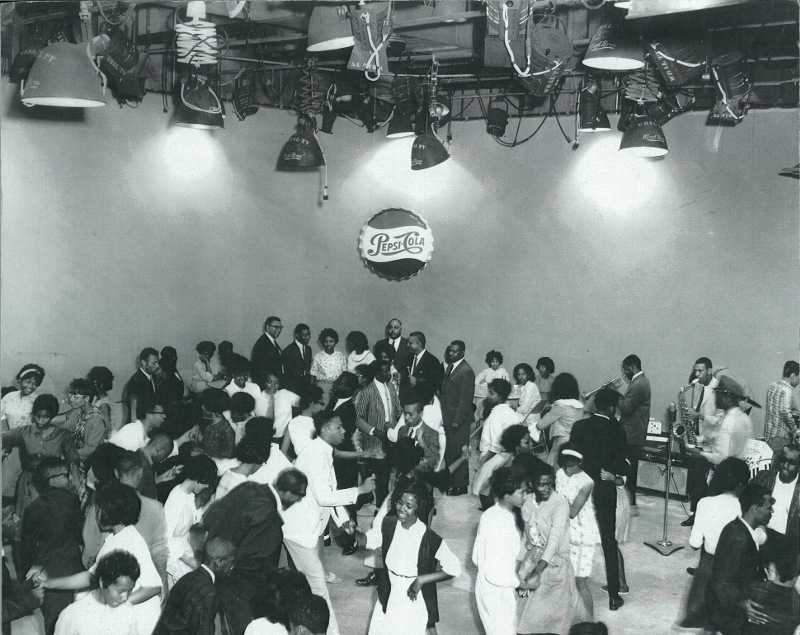
Courtesy of Yvonne Lewis Holley.
Ed. note: artsmeme is delighted to share the second of three excerpts from an marvelous new book by author Julie Malnig. Dancing Black, Dancing White: Rock ‘n’ Roll, Race, and Youth Culture of the 1950s and 1960s (Oxford University Press, May 2023) explores the highly popular phenomenon of televised teen dance programs, incubators of new styles of social and popular dance that both reflected and shaped social and political issues of the day. Our second excerpt starts here:
Teenage Frolics vies with The Mitch Thomas Show as the “first” regularly scheduled television show hosted by a Black deejay and featuring Black teenage dancers and studio participants. It was also the longest lasting. Teenage Frolics aired from 1958 to 1982, every Saturday at noon, on Raleigh, North Carolina’s WRAL-TV (Channel 5), which was part of the Capitol Broadcasting Company, and an affiliate of NBC. The show was so popular across the state that some teenagers and teen groups would travel 100 miles to take part. While tickets were not required for admittance to the show (most simply turned up hoping to get in), most teenagers, student groups, and others wishing to participate on the show, wrote to the station to reserve a place for a specific date. Teenage Frolics featured its own house band, Irving Fuller and the Corvettes, as well as noted local and national performers. As a measure of the intense racism and fears of broadcasting a Blacks-only show, at its inception, Teenage Frolics alternated Saturday with a wholly white teen show. As with Black radio of the early 1950s, white teenagers gravitated to the Black show. According to Yvonne Lewis Holley, “We’re talking about segregation. When it started, one week it was a white show, the next Saturday it would be a Black show. The white show was so bad. And the white kids in the community wanted more of the Black show that they just stopped the show and he [Lewis] got every Saturday.” (Yvonne Lewis-Holly ran for Lieutenant Governor of North Carolina in 2020.)
A part of the reason for the longevity of the show, and, indeed, for the strength of the station, was J.D. Lewis himself, who was instrumental in securing the station’s TV FCC license in 1957. (WRAL began as a radio station). According to Paul Pope, former Vice President at Capitol Broadcasting, Lewis “was the pioneer African American in that company.” He started out as a radio announcer, became host of Teenage Frolics, and also worked in Public Affairs for the station (where he hosted a community-affairs show called Harambee) and was the station’s first Personnel Director. But it was also Lewis’s deep ties to the Black community in Raleigh that endeared him to the city’s populous and made him a valuable player at the station. As Pope recalled, “Fred Fletcher [the white owner of the TV station) had a relationship with the African American community, and he was smart enough to use J.D. Lewis.
Julie Malnig is Professor of Dance and Theater Studies at The Gallatin School of Individualized Study at New York University. Her prior works include the edited collection Ballroom, Boogie, Shimmy Sham, Shake: A Social and Popular Dance Reader (University of Illinois Press, 2009) Dancing Till Dawn: A Century of Exhibition Ballroom Dance (NYU Press, 1995).
Purchase link here: Dancing Black, Dancing White: Rock ‘n’ Roll, Race, and Youth Culture of the 1950s and 1960s.
